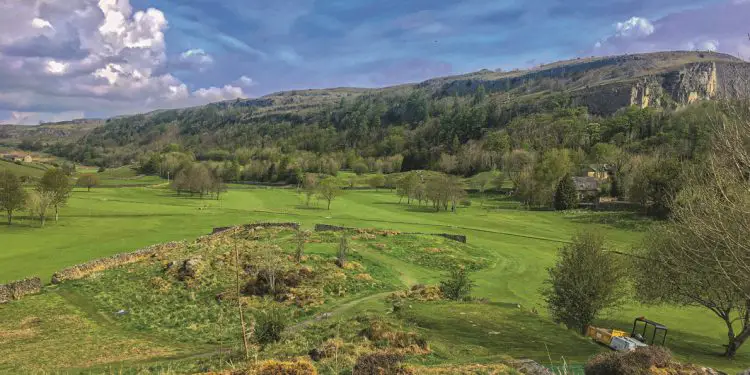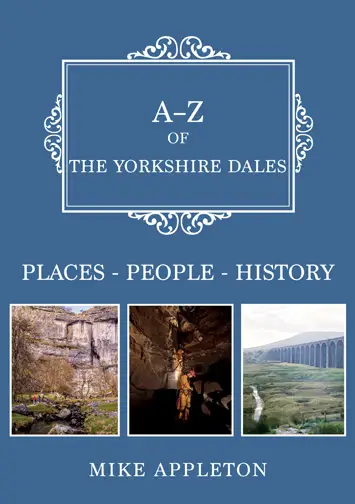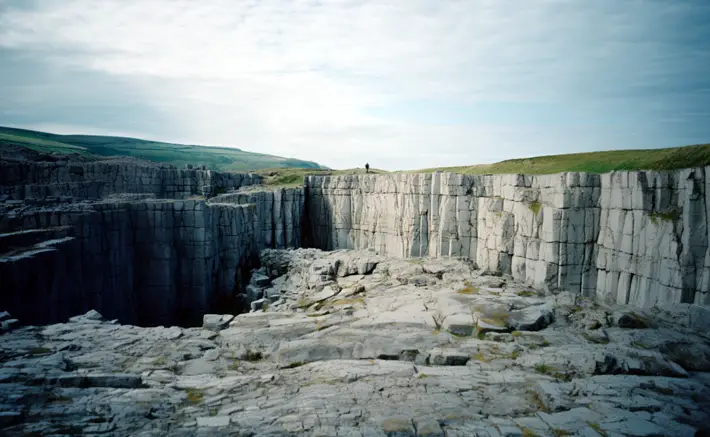The ‘Goners’ of Giggleswick: Lost Quarry Caves of the Yorkshire Dales

By Mike Appleton
As the Dales evolves, it’s inevitable that pieces of cultural and historical heritage will disappear, but there are lots of organisations trying to preserve the past. So much so, the Dales has often been called a museum where progression and advancement don’t seem to fit with most people’s view of a national park. That is open to debate, but there are plenty of reasons why millions flock to this part of Britain’s countryside every year, and a large one is to connect with the past and those that have gone before them.
Sadly, some progress does have an impact. Quarries in particular leave a legacy on the landscape that cannot easily be returned to the way it was by planting a few trees and letting nature take over. Giggleswick Quarry, near Settle, was closed nearly fifteen years ago after its reserves had been depleted. It was put up for sale by Hanson UK in 2016. The reason why this landmark features here is because of what has been lost – caves. Any quarry that takes limestone is likely to be removing natural features that have taken millions of years to form.
That said, you could also argue that if it wasn’t for quarrying, and indeed mining activity, some of these caves wouldn’t have been discovered in the first place.
“Broken into the face”
In 1931, the Craven Pothole Club made its first descent into the quarry to check out what was called Giggleswick Quarry Cave. A year later the Yorkshire Ramblers Club’s journal said that ‘during the summer a small cave was broken into the face of Giggleswick Quarry, and by now is probably quarried away’.
Fifty years later the March edition of the ULSA Review reported:
“During the blasting of the quarry face, a large cave was exposed. The cavity was 150 ft. long with maximum dimensions of twenty-five feet wide by thirty feet high. Ends in a choke seventy-five feet above the quarry floor and the continuation must be below the rubble at the entrance. Undoubtedly more caves may be expected as the quarry face advances.”
Eminent caver John Cordingley told me that the original Northern Caves V1 publication said that Giggleswick Quarry Cave was quite big by all accounts. He said: ‘The map in Northern Caves V1 shows it being on the [east] side of the quarry and says it’s likely to be quarried away. But the quarry is much bigger than that map shows. There are the partial remains of a big natural passage on the left (west) side – I always wondered if that was what was left of Giggleswick Quarry Cave – perhaps the position shown on the Northern Caves V1 map may be wrong or it could be the remains of a completely different (big) natural cave, found and largely destroyed subsequently.’
 “Lost by progress”
“Lost by progress”
An updated version of Northern Caves 2: The Three Peaks was published in 1991 and it described the cave as 43 metres in length: ‘Large entrance exposed by quarrying opens into huge chamber, twenty-four metres long, eight metres wide with various holes in the roof’ … it then repeats … ‘liable to be quarried away’.
There are several other caves on Giggleswick Scar that have been documented and are still there. There are also those that are being rediscovered and pushed further. Saga Hole, for instance, is around 48 metres in length. Away from the quarry is Greater Kelco Cave, which was extended in late October 2022 by John. These two aren’t accessible to the public.
It’s sad that this heritage and landscape is lost by progress – one caver said to me ‘that’s life lad’ – and therefore it’s important that we document as much history as we can for future generations.
Article taken from ‘A-Z of The Yorkshire Dales’ by Mike Appleton, published by Amberley Publishing,
£15.99 paperback










